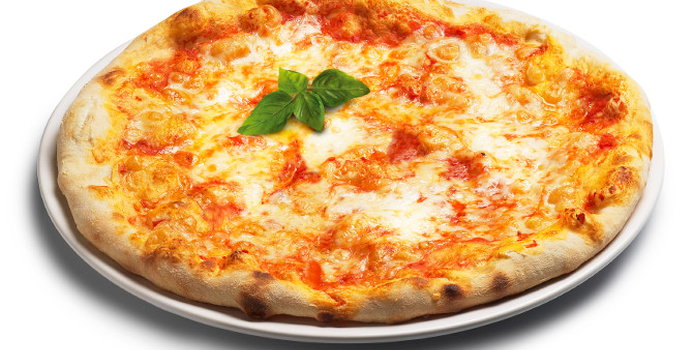Although often villainized as an unhealthy food, this is a narrow view of the actual health benefits of pizza. Pizza can be anything you want it to be and in moderation, even commercially prepared pizza offers many health benefits. The best choice always is to make your pizza at home, so you can control the amount of toppings you put on. Making it at home also gives you the advantage of making a crust using whole-wheat or whole grain flour. This will increase the amount of fiber, vitamins, phytonutrients and minerals found in the pizza. When making a basic cheese pizza at home you can add a variety of vegetable toppings, limit the cheese and roll the crust to a desired thinness. These choices give you increased nutrition and a reduction in calories, making pizza a healthier meal!
But even commercially prepared pizzas have all the necessary macro nutrients that you need and is high in many micronutrients. The problem is that often people eat many slices of pizza which can quickly add up to unnecessary calories and above the daily recommendations for saturated fat.
Nutritional Value of Cheese Pizza
Average values for 1 slice of commercially sold cheese pizza (96g)
Calories: 260
Fat: 10g / 16% DV
Saturated Fat: 5g / 24% DV
Carbohydrates: 30g / 10% DV
Protein: 11g / 23% DV
Fiber: 2g / 7% DV
Selenium: 19.7mcg / 28% DV
Phosphorus: 239mg / 24% DV
Sodium: 658mg / 27% DV
Calcium: 201mg / 20% DV
Thiamin: 0.3mg / 17% DV
Health Benefits of Cheese Pizza
- A single slice of plain cheese pizza already has 23% of all the protein you need in day! Add some meatless protein crumbles or other lean protein sources, in addition to switching to whole wheat flour and the protein power increases! Protein is needed by every cell, organ and tissue in our bodies. Eating protein everyday ensures that our body gets enough to make amino acids and replace or build up the constantly breaking down proteins in our tissues and organs.
- Pizza is a good source of phosphorus. Phosphorus is a part of your bones, teeth and DNA/ RNA. It is also one of the main regulators of energy metabolism in organs, and helps generate energy in every cell.
- Selenium is a trace mineral that works with vitamin E for antioxidant protection. In one slice of pizza you are getting a high source of selenium. Eating enough selenium can help reduce your risk of cancer, heart disease and other diseases.
- Another nutritious part of pizza is the calcium content, 1/5 of all the calcium you need in a day is in one serving. Calcium is well-known for its role in building and maintaining healthy bones, it lengthens, strengthens and slows further loss with age. Additionally calcium is used to help the muscles in your body contract, including your heart beat! Smaller amounts of calcium also play a role in blood clotting and nerve function.
Pizza Considerations
- This is a calorically dense food and multiple slices can quickly add up. Aim for pizzas with whole wheat crust, less oil, limited high calories meats and reduced cheese for fewer calories.
- Pizza, especially commercially prepared pizza, can have lots of sodium in it. If you are a person who is salt-sensitive, reduce your intake or prepare at home.
- Although there is some contention, some pizza choices are very high in saturated fats. Nutrition experts like the Academy of Nutrition and Dietetics, still recommend keeping your saturated fat intake to a minimum for optimal health.

Emily DeLacey MS, RD is a Registered Dietitian and currently working in Jamaica as a HIV/ AIDS Prevention Specialist. She attended Central Washington University for her Bachelor's Degree in Science and Dietetics and continued on after her internship to Kent State University for her Master's Degree in Science and Nutrition, with a focus on public health and advocacy. She served as a U.S. Peace Corps Volunteer in Malawi 2012-2014 working as a Community Health Advisor in a rural village, immersing in the joys of life without electricity or running water. She has been to 20+ countries and 47 of the 50 states in the US. Traveling, adventuring and experiencing new cultures has made her a passionate advocate for the equality of nutrition and wellness for all people.



